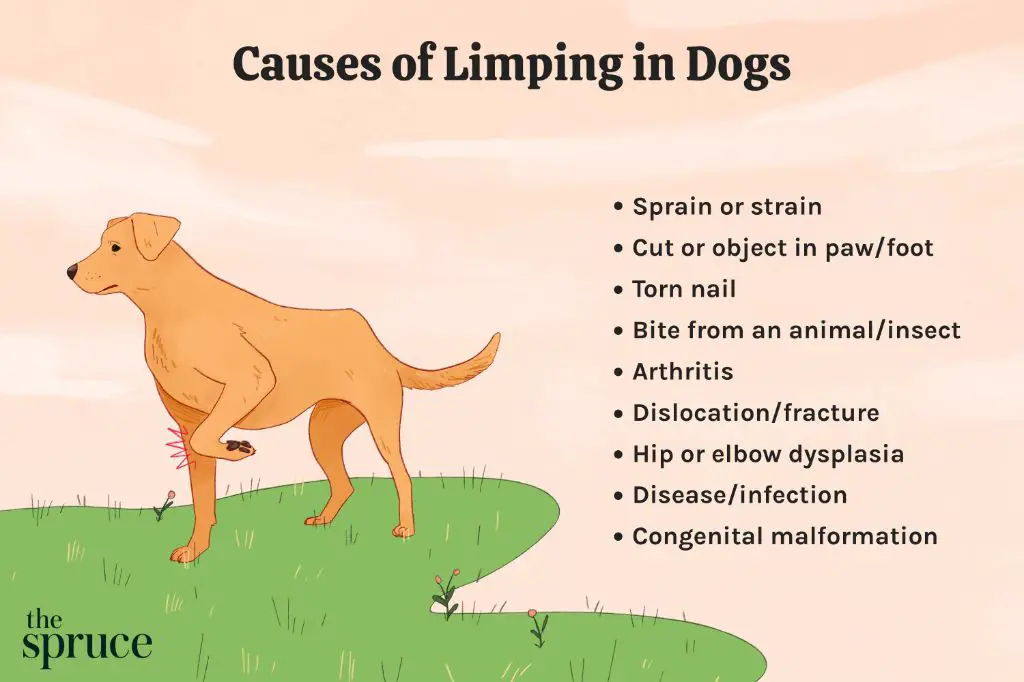Introduction
It’s not unusual for dogs to bark or whine occasionally, but excessive vocalization for no apparent reason can be frustrating and concerning for pet owners. Dogs communicate through barking and whining, so this behavior is normal in moderation. However, frequent barking or whining with no direct cause could indicate an underlying issue that needs to be addressed.
Excessive barking and whining with no clear trigger should not be ignored. It’s important for pet owners to understand the potential reasons behind this behavior so they can take steps to help their dog. This article provides an overview of the common causes of excessive barking and whining in dogs with no apparent reason, prevention tips, when to seek professional help, and how to curb this behavior.
Common Causes
Dogs can whine and bark excessively for a variety of reasons. Some of the most common causes include:
Boredom
Dogs are intelligent, active animals that need mental stimulation and physical activity. If a dog is left alone for long periods or does not get adequate exercise and playtime, they may start whining and barking due to boredom and frustration (https://anticruelty.org/pet-library/excessive-barking-whining-and-crying). Making sure your dog gets enough interactive playtime and has access to puzzle toys when alone can help alleviate boredom-related vocalizations.

Anxiety/Stress
Dogs are creatures of habit and can become anxious or stressed by changes in their environment or routine. Events like moving homes, introducing new pets or people, or being left alone for longer than usual can trigger anxious whining and barking (https://www.zylkenepet.co.uk/signs-and-symptoms/dogs-barking-or-whining/). Using calming aids like pheromone diffusers or providing a safe space like a crate can help ease anxiety-related vocalizations.
Attention-Seeking
Some dogs will excessively whine and bark to get attention from their owners. This often happens if dogs learn that vocalizing leads to receiving attention. It’s important not to inadvertently reward this behavior by giving attention when the dog whines or barks (https://pethelpful.com/dogs/Adressing-Attention-Seeking-Whining-and-Barking-in-Dogs). Instead, wait for quiet moments to interact and reward with attention.
Illness/Injury
Dogs that are ill, injured or in pain may vocalize more through whining and barking. Any major changes in vocal patterns, especially in older dogs, warrants a veterinary visit to check for underlying medical issues (https://www.zylkenepet.co.uk/signs-and-symptoms/dogs-barking-or-whining/). Treating pain, infections or other conditions can help resolve medical causes of excessive vocalizations.
Boredom
Dogs are prone to boredom when they don’t get sufficient physical and mental stimulation to match their breed’s activity requirements. An under-stimulated dog can behave in frustrating ways like whining, barking, chewing, and other destructive behaviors as an outlet for pent-up energy. High energy or working breeds like herding dogs and hunting dogs require more exercise and mind games than companion breeds.

Without enough activity and mental enrichment, these dogs become restless and bored. Bored dogs often bark, whine, or pace while seeking attention and activity. Providing adequate walks, play time, toys, and puzzles tailored to your dog’s needs can prevent boredom and curb attention-seeking behaviors.
According to Puppy Leaks, telltale signs of a bored dog include constantly following you around the house, nudging or pawing at you frequently, staring intently, barking or whining at you, bringing you toys to play with, and getting into mischief like chewing, digging, or stealing household items when left unattended.
Anxiety/Stress
One of the most common causes of whining, barking and howling in dogs is anxiety or stress. Some common triggers that can provoke anxiety include separation, loud noises, strangers, or other environmental changes that the dog perceives as threatening. Dogs experience anxiety just like people, and it can manifest in similar ways.
Some symptoms of an anxious or stressed dog include pacing, destruction of property, inappropriate urination or defecation, hiding, lack of appetite, and constantly following or clinging to the owner. The whining, barking and howling is a way for the dog to vocalize and release their anxiety. It’s important for owners to recognize the triggers, and take steps to minimize the stressors whenever possible.
Strategies like providing distraction toys when alone, desensitizing dogs to noises through conditioning, and ensuring the dog gets adequate exercise and mental stimulation can all help reduce anxiety and associated vocalizations like whining and barking. In severe cases of separation anxiety or noise phobias, consulting a veterinary behaviorist may be warranted.
Attention-Seeking
Dogs will often whine or bark to get attention from their owners. This can become a learned behavior if the dog is rewarded for whining or barking. Owners may inadvertently reinforce this behavior by giving the dog attention, treats, or access to things it wants when it whines or barks Addressing Attention-Seeking Whining, and Barking in Dogs. The key is to ignore the dog when it is demanding attention through whining or barking. Only give the dog attention when it is quiet and calm. It may also help to teach the dog commands like “quiet” or “enough” so you can interrupt unwanted whining or barking.

Illness/Injury
Dogs may whine or bark excessively due to pain or discomfort from an illness or injury. According to the ASPCA, “Dogs sometimes bark in response to pain or discomfort, whether chronic or acute. Geriatric dogs with cognitive dysfunction may become disoriented or lost and vocalize as a result. Dogs with neurological problems sometimes bark apparently without reason.”
Underlying conditions like arthritis, dental problems, wounds, or gastrointestinal issues can cause your dog to whine or vocalize from physical discomfort. Checking with your veterinarian can help identify and treat sources of pain that may be causing vocalizations.
Senior dogs with canine cognitive dysfunction syndrome may bark persistently due to confusion or anxiety. As per PetCure Oncology, dementia in older dogs can manifest in increased barking and whining. Consulting your vet about medications or supplements to improve cognitive function may help reduce excessive vocalizations.
If your dog suddenly starts whining or barking for no reason, it’s important to rule out illness or injury as the cause. Unexplained changes in behavior warrant a veterinary visit to identify any health issues requiring treatment.
Prevention
Preventing unwanted barking and whining requires addressing your dog’s underlying needs for physical activity, mental stimulation, and social interaction. Setting up a predictable routine with regular exercise and playtime can reduce boredom and anxiety when you are away.
Make sure your dog gets adequate physical exercise every day through walks, runs, or playing fetch. A tired dog is less likely to bark or whine due to pent up energy. Providing mental stimulation through training, puzzle toys, and chews can also curb barking and whining by engaging your dog’s mind.
Try to reduce anxiety triggers like loud noises or seeing people/animals outside. Provide a safe space for your dog to retreat to, using crates, dog beds, or a comfortable room in your home. Introduce any triggers slowly and use positive reinforcement to change your dog’s emotional response.
Most importantly, ignore attention-seeking behaviors like barking or whining. Rewarding the behavior, even with scolding, will reinforce it. Divert your dog’s focus instead through obedience commands or distraction when barking occurs.
Training
One of the most effective ways to stop dog whining and barking is through training and positive reinforcement. When your dog is quiet, even for a few seconds, reward the behavior with praise and treats [1]. This teaches your dog that being quiet results in rewards. You can also use verbal cues like “Quiet” or “Enough” to indicate when the barking should stop. If your dog responds to the cue and stops barking, reward with a treat immediately after. With time and consistency, your dog will learn these cues. However, if the barking persists despite training efforts, seeking help from a professional dog trainer or behaviorist may be necessary. They can assess your dog’s specific reasons for barking and design an effective customized training program.
When to Seek Help

Persistent whining or barking that is excessive or occurs suddenly in a dog that was previously quiet can be a sign of a potential underlying medical issue. Some health conditions that could lead to increased vocalizations in dogs include:
– Pain or injury – Dogs may whine or cry when they are hurting. Persistent whining or yelping when moving, along with lethargy or change in appetite, could indicate an injury or orthopedic problem like arthritis.
– Cognitive dysfunction – Senior dogs with canine cognitive dysfunction may whine frequently, seem confused or lost, or bark at odd hours. This is similar to Alzheimer’s disease in humans.
– Anxiety/compulsive disorders – Dogs with separation anxiety, noise phobias, or obsessive compulsive behaviors may whine, bark, or howl excessively. The vocalizations are not appropriate to the situation.
– Neurological issues – Conditions affecting the brain like encephalitis, tumors, or epilepsy can cause behavioral changes like excessive vocalizations. Seizures may also be accompanied by whining or barking.
If your dog is vocalizing persistently for no clear reason, it is important to rule out any medical factors. Schedule a veterinary exam and bring examples of the vocalizing to help your vet evaluate the cause. Treatment will depend on the underlying reason for the behavior.
Conclusion
In summary, while whining and barking can be frustrating behaviors for dog owners, these vocalizations are your dog’s way of communicating basic needs and desires. Common causes include boredom, anxiety, attention-seeking, and even medical issues. The key to reducing excessive whining and barking is addressing the underlying motivation through proper training, exercise, enrichment activities, and veterinary care as needed.
Rather than punishing your dog for whining or barking, focus on positive reinforcement techniques and removing triggers to prevent the behavior when possible. Have patience, as it may take time for new training to stick. If all else fails, consider consulting an animal behaviorist for extra help.
Remember that vocalization is normal canine communication, but excessive whining and barking indicates an unmet need. With proper prevention and training tailored to your individual dog, you can reduce excessive vocalization and build a strong bond.